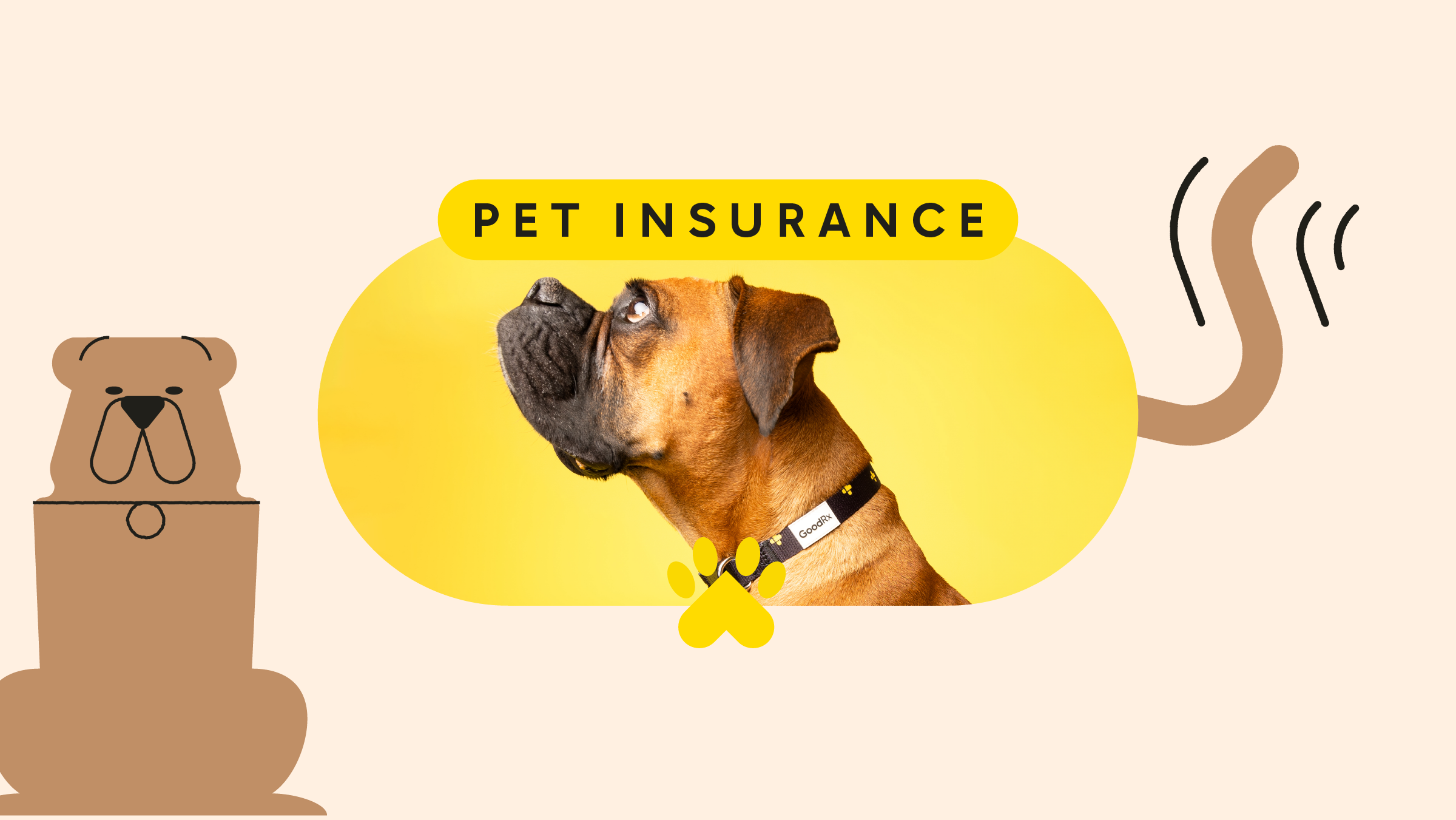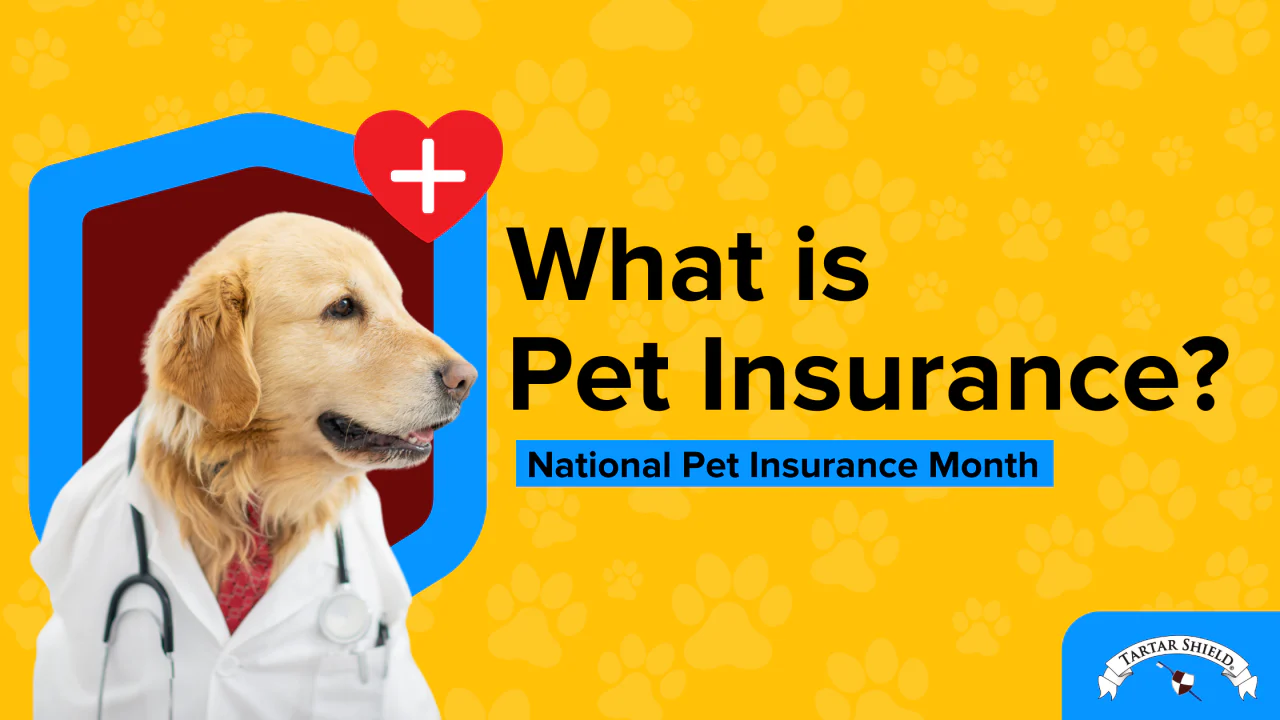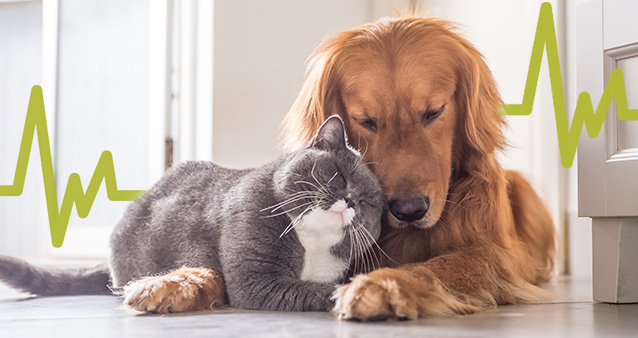Meet Vira, my adorable dog companion, eagerly awaiting our walk break as I type. It’s tough to picture life without her since adopting her a year ago. To ensure Vira’s well-being, I researched pet insurance options like Lemonade and Pawp, creating a safety net for unforeseen vet expenses. Pet insurance is becoming increasingly popular nationwide, sometimes even part of employee benefits. While not as vital as health or auto insurance, understanding pet insurance coverage can aid in deciding if it suits your furry friend.
Toc

What is pet insurance?
When your pet suffers from an unexpected illness or injury, your budget could limit your ability to properly care for them.
In fact, according to Healthy Paws Pet Insurance & Foundation, one in four dogs will get cancer at some point in their lifetime, and the average treatment can cost $10,000 or more! As much as it pains me to say it, I could not afford a $10,000 treatment plan if my pup needed it—and I imagine I’m not alone.
Pet insurance can help you save money on anything from stitches to a life-saving surgery for your pet. It protects you from the unplanned expenses that occur when your dog, cat, reptile, bird, or other animal becomes ill or injured, so you can maintain the health of your finances and your pet at the same time.
Is pet insurance worth it?
For those seeking definitive answers of “yes” or “no,” I offer my apologies in advance. The reality is nuanced. In 2019, the average annual premium for pet insurance stood at $585, while the average annual vet bill amounted to just $92. However, data from PetInsuranceQuotes.com reveals that “every six seconds a pet owner encounters a vet bill of $1,000 or more.” Ultimately, the worth of pet insurance boils down to one principle: “If utilized, it holds value; if not, it does not,” as articulated by Kristen Lynch, the executive director of the North American Pet Health Insurance Association (NAPHIA). Therefore, the pertinent question to ponder is whether pet insurance aligns with your needs and those of your beloved companion. If your pet enjoys good health, the potential for a substantial vet bill might appear preferable to escalating insurance premiums. Nonetheless, if you can accommodate an extra $30 or $40 per month, exploring various policy options could provide peace of mind.

How does pet insurance work?
In many ways, pet insurance is a lot like health insurance.
If your kid breaks their leg, you take them to the hospital and call your insurance company; the same goes for your pet. Both health insurance and pet insurance also have monthly premiums and deductibles. However, there is one important distinction between the way pet insurance works, as compared to health insurance.
When your kid breaks their leg, the insurance company pays medical fees upfront. You receive a bill later to cover your share of the expenses. However, if your dog does the same, you still have to foot the bill—no pun intended. Instead, your pet insurer will reimburse you for medical bills later, but you bear the initial responsibility of paying for your pet’s health care.
What does pet insurance cover?
What most insurance companies provide is protection for your finances and your pet when surprise costs arise, typically due to an accident or illness.
If your pet suffers a bite wound or a burn, for instance, your insurer can help you afford treatment options such as antibiotics, sutures, and even surgery. Insurance can also help you care for your pet should they ever experience health complications like a urinary tract infection, arthritis, or even life-threatening diseases like kidney failure.
What many insurance policies do not cover, however, is routine care for healthy animals. If you’re taking your cat in for an annual exam, for example, or bringing your dog in for a rabies vaccine, insurers generally expect you will cover those costs on your own.
If you’d like a policy that includes coverage for anticipated procedures and care, search for a company that offers wellness coverage, also called “preventative care” or “routine care,” either included in their policies or as an add-on.
Types of pet insurance

While most policies are highly customizable—tailored to your pet’s breed, age, and more—companies generally offer three main types of coverage: accident-only, accident and illness, and wellness.
Accident-only
Accident-only policies are pretty easy to understand. If your pet ingests a toxic substance, for example, an accident-only policy will usually cover services like X-rays, bloodwork, surgery, and more.
These policies provide the most basic coverage for your pet, and, as a result, are the cheapest.
1. https://viralblogspost.com/archive/3445/
2. https://viralblogspost.com/archive/3506/
3. https://viralblogspost.com/archive/3637/
Accident and illness
This option is, by far, the most popular. In fact, roughly 95% of pet insurance policies are accident and illness plans for dogs, cats, and other animals.
In addition to the situations insured in an accident-only policy, the added illness coverage includes anything from an ear infection to cancer, including costs related to diagnosing conditions.
Lemonade is a great option when it comes to covering any accidents or illnesses your furry friend incurs. When covered events happen, Lemonade provides coverage that can pay for diagnostics like x-rays and labwork, any procedures your pet may need to have, and the medications they may need to take.
You can sign up for Lemonade quickly, and claims can be paid out extremely quickly thanks to Lemonade’s advanced AI. Plus, you can get coverage for your pet starting at just $10/month (plus, add a 10% discount if you insure your home with Lemonade already!).
Wellness
Wellness coverage is available for your pet’s routine, preventative care—such as annual exams and vaccines—and is typically offered as an add-on for your plan.
Embrace Pet Insurance, for example, has an optional preventative care plan called Wellness Rewards, which operates like an allowance. In addition to your accident and illness policy, Embrace’s Wellness Rewards plan reimburses you for routine veterinary, training, and grooming costs—including microchipping, spay/neuter surgery, and even prescription diet food.
Pumpkin Pet Insurance has a similar option, and preventative care is a central part of their pet care philosophy. They emphasize the importance of preventing and diagnosing issues quickly. That’s why their optional preventive plan, Pumpkin Preventive Essentials, includes an annual wellness exam, vaccines, and key lab tests to detect diseases, all at 100% reimbursement.
Extras
In addition to the options listed above, many companies provide added benefits, which may or may not be included in the insurers’ regular accident and illness plans (some present these benefits as added coverage options instead).
With Embrace, for instance, all policies include treatments for alternative therapies, such as chiropractic care and acupuncture; behavioral conditions; and even prosthetics and mobility devices—which is not typically covered by pet insurance companies. Embrace also offers competitive coverage for dental illnesses, up to $1,000 a year!
If, however, the various types of insurance and added benefits are overwhelming to you, consider insurers like Lemonade and Pumpkin.
Exclusions
As you research, keep in mind that some circumstances and conditions are not often eligible for coverage.
For instance, many companies do not provide coverage for certain breed-specific illnesses or cosmetic procedures, such as dewclaw removal. In addition, no company will cover pre-existing conditions; however, Embrace’s dog insurance plan differentiates between curable and incurable pre-existing conditions, so pet owners can still receive some assistance.
Additionally, many companies will not provide coverage for pets over a certain age. Pumpkin, on the other hand, does not have an upper age limit and offers policies for any dog or cat over eight weeks.
Cost of pet insurance

The average cost of pet insurance typically ranges around $45 per month for dogs and $25 for cats. However, the actual amount you will pay is influenced by factors such as your pet’s age, breed, location, and desired coverage level.
When assessing different coverage options and expenses, it is important to delve into details like the premium, deductible, reimbursement percentage, and coverage limits. The premium mentioned earlier—approximately $45 for dogs and $25 for cats—is the monthly amount you invest to safeguard your pet’s well-being.
Lemonade presents competitive pricing, offering comprehensive coverage for as low as $10 to around $30. Their plans encompass various preventive care services, multiple checkups, and therapeutic treatments.
Pet insurance deductibles
Remember that with pet insurance, there also may be a deductible – the amount you’ll pay before your insurer begins covering costs. At Lemonade, deductibles are $100, $250, or $500.
Embrace has deductibles ranging from $200 to $1,000, but also offers a diminishing Healthy Pet Deductible, which cuts $50 off your deductible every year you do not receive a claim reimbursement. Pumpkin’s annual deductible options fall between $100 and $500.
The reimbursement percentage is the amount your insurer will cover after you’ve paid your deductible. Many pet insurance companies provide a range of rates for their policies, like 70-90% with Lemonade and Embrace; Pumpkin’s plan offers a competitive reimbursement rate for dogs and cats.
1. https://viralblogspost.com/archive/3636/
2. https://viralblogspost.com/archive/3515/
3. https://viralblogspost.com/archive/3596/
Pet insurance coverage limits
Finally, the coverage limit is the maximum amount your insurer will provide for medical expenses. With Lemonade, you’re able to select an annual limit between $5,000 and $100,000 which is a wide upper range. Embrace can have coverage limits as low as $5,000, or all the way up to $30,000, depending on the policy you choose. Pumpkin’s plan offers annual limits of $10,000 or $20,000 for dogs, and $7,000 or $15,000 for cats.
Beyond these factors, there are plenty of other ways to keep pet insurance costs low. For instance, many pet insurance policies have rising premiums as pets age, so be sure to insure your pet while they’re still young and healthy.
Additionally, you can save money by paying your premium on an annual basis instead of monthly. Many insurance companies will also offer discounts for pet owners in the military or those with multiple pets.
Should you purchase pet insurance?
Pets, just like humans, can face specific health issues. Pet insurance plays a vital role in providing financial security for unexpected vet visits. Purebred pets may be prone to hereditary conditions, while older animals are more likely to require frequent medical attention. It’s important to consider your pet’s breed and your financial readiness for unforeseen expenses when deciding on pet insurance. If you’re worried about covering expensive vet bills, a pet insurance plan can offer peace of mind. Remember, pet insurance may not be necessary if you have a solid emergency fund. Evaluate your pet’s needs and your financial capacity to determine the right choice for you.
How to choose a pet insurance policy

To select a suitable policy, begin by determining the desired coverage for your pet, followed by a thorough comparison of available options.
For those prioritizing cost considerations, evaluating accident-only policies while avoiding supplementary benefits is recommended. Research indicates that preventative care add-ons may not always be a sound investment for your pet, hence skipping wellness coverage can help in reducing expenses.
To assist in evaluating various choices, companies like Lemonade, Pumpkin, and Embrace offer detailed policy comparisons alongside other prominent pet insurance providers.
Prior to finalizing a policy, ensure a comprehensive understanding of the coverage provided by your insurer, encompassing specific circumstances, conditions, and the extent of your pet’s medical expenses. It is important to note that premiums often escalate with your pet’s age, necessitating awareness of potential price increases before making a purchase.
Alternatives to pet insurance
Whether pet insurance is a worthwhile investment is a personal decision that requires thoughtful consideration. However, there exist alternatives to insurance that can aid in cost savings for pet care.
Establishing an emergency fund is crucial for unforeseen circumstances, with Pawp standing out as a reliable option to kickstart this initiative. For a monthly fee of $24, Pawp offers unlimited telehealth visits and an emergency fund of $3,000.
Opting for cost-effective care over insurance is another strategy. By obtaining quotes from various clinics and exploring local veterinary schools that provide affordable services, pet owners can manage expenses efficiently. Online platforms like Ask.VetBabble offer complimentary veterinary advice as well.
Flexible payment plans can help mitigate the burden of veterinary bills. Some veterinarians extend payment options, while services like CareCredit and Scratchpay offer financing choices for pet owners facing financial constraints.
For those in need of financial aid, seeking assistance from crowdfunding platforms such as Waggle and GoFundMe, or organizations like the Foundation for Animal Care and Education (FACE) and Help-a-Pet, can provide the necessary support for pet care expenses.
Summary
At the end of the day, the value of pet insurance hinges on the perspective of the individual in question. Consider if allocating an extra $30 or $40 monthly towards insurance is viable. Do you possess a substantial veterinary emergency fund? Is your pet dealing with health concerns? Have you invested in regular preventive care to uphold their well-being?
If contemplating purchasing a policy, assess your pet’s breed, requirements, and your risk tolerance. Analyze the current cost implications and how they might evolve with your pet’s age. Ensure to compare quotes and coverage options from reputable companies like Lemonade, Pumpkin, and Embrace. Engage with insurers to identify the policy aligning best with your needs and those of your pet.
While contemplating the possibility of your pet falling ill or sustaining an injury may be distressing, readiness for unforeseen expenses is key. Whether opting for budgeting or an insurance policy to address these costs, the paramount objective remains safeguarding yourself, your pet, and ensuring your companionship endures as long as possible.













